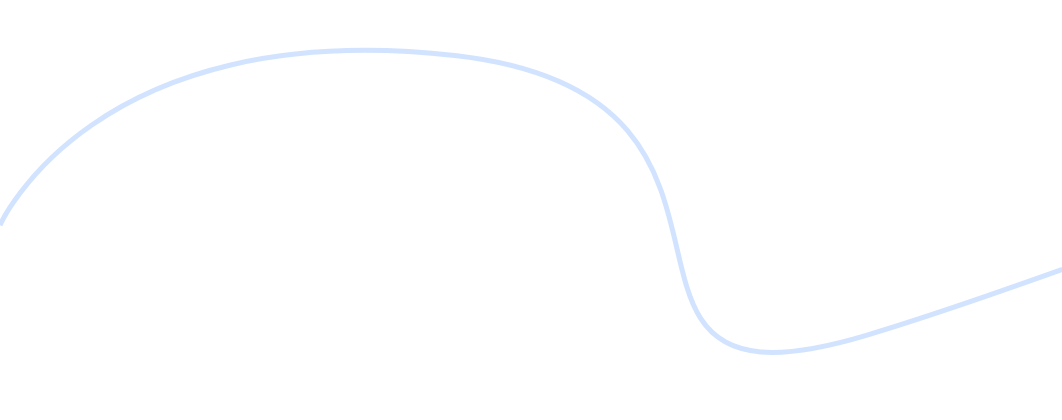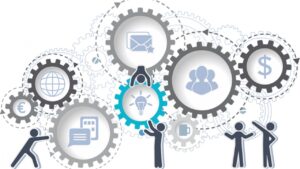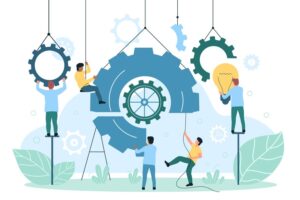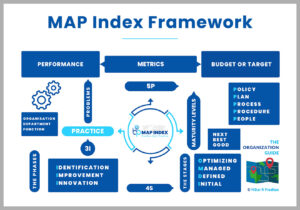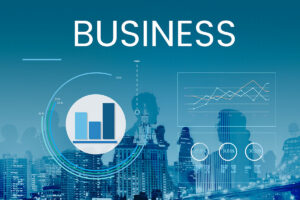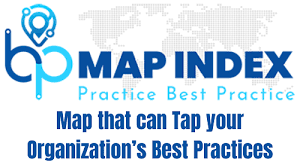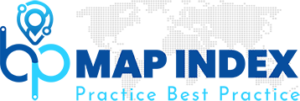That’s the part of policy: To switching gears — Ridley Scott
There is this idiom “shifting gears”, change the way we do something. Similarly another idiom “gear up” means to prepare and get ready. In a way gear signifies movement, motion and power. We need to gear up when situation demands and shift gears to navigate the obstacles that keep coming our way. Different situations demand different application of gears.
Is there an analogy of gears in the working of an organization?
Machines are the metaphor for the working of organization. Gears are the vital parts of machine and machines need transmission of power to different parts to function. Today, machines are being trained to think like human beings. ML/AI is changing the nature of treatment and dealing with machines. The power of thinking is shifting; indeed a paradigm shift in the relationship between man-machine is in the making. There are this technical tools and mechanical devices which play different roles in augmenting the capacity to work by transferring power. As much in our daily life so much in organization there is this power dynamics at constant play. We need to understand the intricate interplay at work and learn the finer interfaces to play it well. We human beings operate with the power of energy.
Organizations are so much like organisms and they need the power to function but the question remains how the power gets produced and distributed within the system.
What does power means in the context of organization?
- The power of resources.
- The power of authority.
- The power of control.
- The power of setting goals.
- The power of driving results.
- The power of making things happens.
Is there a mechanism to set right and get all the power in place?
Or are we going to keep grappling with dynamics of power. These are some fundamental questions that the management of an organization needs to ask and get the answers. How do we compare between an organization and the machine? And then derive some inferences through analogy which can help make a better design of organization.
Technically speaking, gears are mechanical devices that transmit motion from one part to the other part of a machine. Gear does multiple functions. It changes speed. It transfers power. Though these are single entities but they work together like an integrated system. Gears are designed in set of two or more parts. There are teeth to each gear and teeth of different gear parts work in a mesh. Thus creates a relationship between two or more gear parts.
Similarly, different parts of the organization as departments are connected. Literally they are in a mesh. The interrelated parts and the interconnection need constant fine tuning. The best possible results are produced when the system is fully tuned. Organization is a system. Management needs system thinking.
How to holistically design an organization?
How to deploy a well designed system to keep performing?
We can design a high power gearbox but unless we learn how to use it effectively and maintain it efficiently we will not get what we have set for the very system. There is knowledge needed to properly use it. There are skills needed to optimally run it. The organization is about abilities, knowledge and skill of people. How we manage all these things decides the working of organization. There are capabilities to process and there are abilities to people. It needs proper management.
Different levels of competencies are needed for performing different set of tasks and the nature of tasks across department differs. Some department needs critical analytical skills. Other department needs creative divergent thinking skills. Some departments are more on tacit knowledge whereas other departments are largely revolving on explicit set of knowledge.
Mostly there are around (4-8) gears on a modern automobile. Each gear has a specific role to play and its application is defined. There is a balance that these gearboxes have to achieve. It is between the speed of acceleration that we derive and the economy of fuel that we desire. What it signifies? There is a cost to everything. We cannot experience the exhilaration of speed without burning more fuel. Similarly, most organizations are divided into four to eight main departments. There has to be a planned coordination between various departments and while doing so proper balance of working needs to be established.
Organization cannot achieve accelerated growth without making investment and spending resources for building capacity. Hence, there are growth funds mobilized for organization to journey that path of accelerated growth. The transmission of power between the gears in the gearbox controls the motion of vehicle. There is continuous transfer of power between departments and also between various functions within each department.
Departments are grouping of similar nature of working. And there are set of key functions under each department. For example in finance and accounts department, we have key functional areas such as funding, costing, auditing, payables to receivables. Similarly in human resource and admin, we have key functional such as sourcing and recruitment, performance appraisal management, training and development, compensation management to organization structuring.
Power in science is amount of energy transfer per unit time; it is the rate at which work is done. Power is the capacity to work. The capacity of a gearbox in an engine is captured in the way those gears are meshed up and work together to transmit the power. The working of an organization is dependent on the way it is structured. The structuring of departments to functions within and to the way different practices is managed under each functional area matters. If the organizational functioning is designed well, it will deliver better business results.
The strategy to system to processes takes away our attention and we get driven by what should be our strategy to succeed and how should we have our processes and systems in place to make things happen in an organized and systematic manner. Having a much wider look at the way we have defined our departments and grouped our activities. It may need regrouping. Having a deeper look into the way things are functioning on the ground. It may need realignment.
The way structure of the organization is designed determines how the power will flow between different parts of the organization. The finance department defines the budget and controls the flow of fund. The human resource department defines the role of people and allocates the responsibilities one needs to discharge. The sales department gets business for the organization. The marketing department creates the conditions to attract customers. If the structure is feeble and faulty, there will be leakage of power making it weak or there will be concentration of power at the wrong place. Neither is a favorable state to be in and it is needed to make structural adjustment.
There is a role defined for each gears in the gearbox of a vehicle, when we are in a slow traffic we drive in low gears and when we are in a fast lane we drive in high gears. There are situations where we cannot go ahead and we have to retreat where we need to use the reverse gear. There are four wheel drives (4WD) and especially gears are designed to transmit power to all four wheels as the vehicle needs that extra power to move out of the tight situation. So are the cases with business organizations. We need to empower the various departments to come out of tough market conditions, and make the organization stronger.


